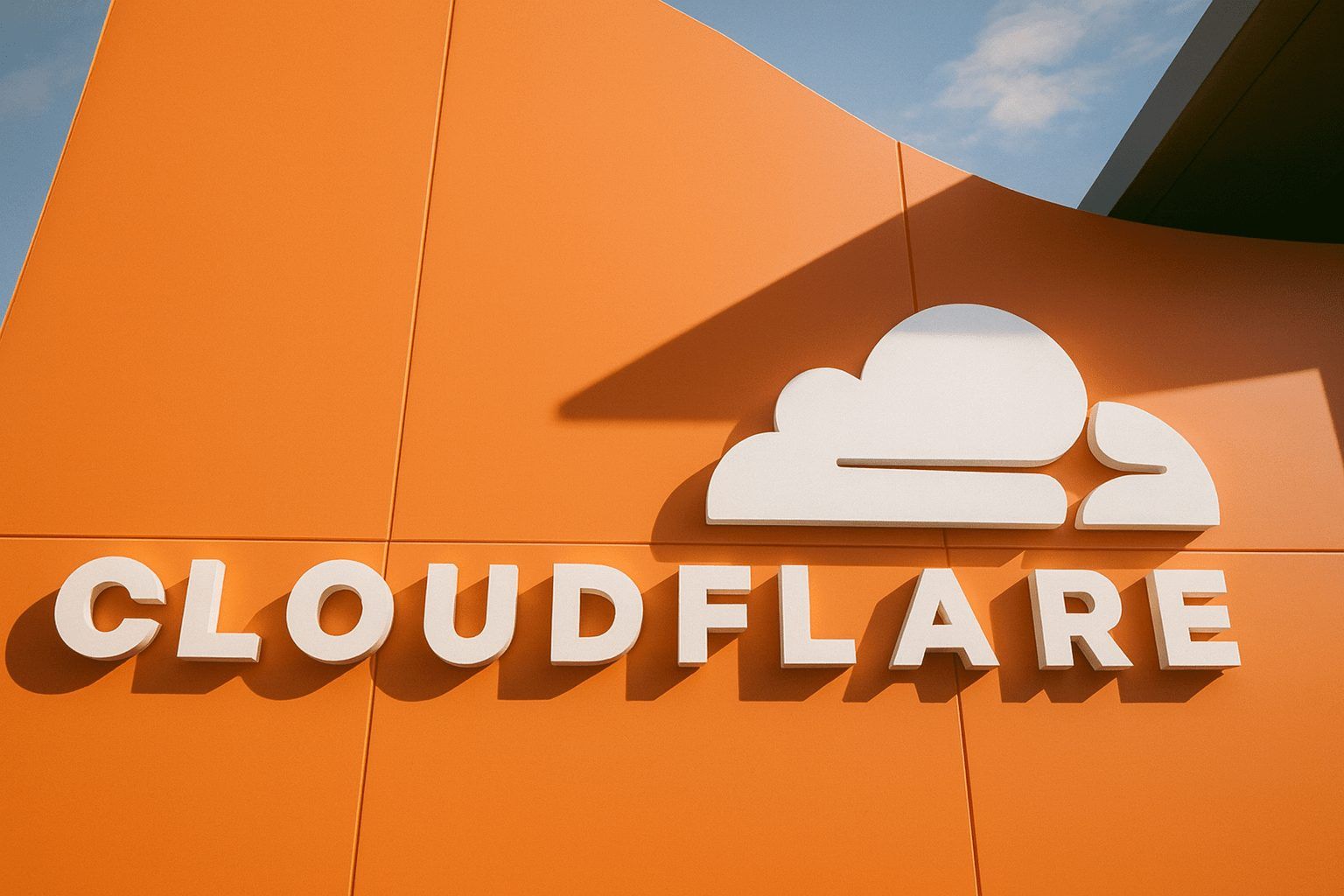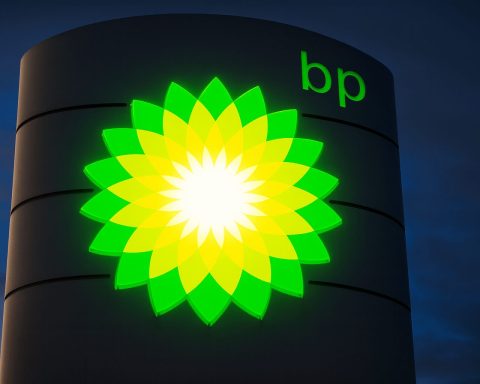Cloudflare stock (NYSE: NET) is heading into the new week trading in the mid‑$180s after a wild November that has combined a global internet outage, heavy insider selling and yet another big bet on AI. Shares opened Friday at $186.56, giving Cloudflare a market value of roughly $65 billion and leaving the stock about 25–30% below its early‑November record near $260, even after gaining more than 80% so far in 2025. [1]
Today is Sunday, so U.S. markets are closed. But for 23 November 2025, there is still fresh news around Cloudflare stock: new institutional ownership disclosures, explainer pieces on last week’s outage, and opinion columns debating whether businesses should diversify away from a single CDN provider.
1. Cloudflare stock snapshot after a turbulent week
- Latest trading zone: NET is sitting around the mid‑$180s after opening Friday at $186.56 and finishing a week in which the stock fell double‑digits from its highs following the outage and broader AI‑stock weakness. [2]
- Trading range: Over the past year, Cloudflare has traded between about $89.42 and $260.00, and it now sits well below its 50‑day moving average around $219 and 200‑day average near $198, reflecting a sharp short‑term pullback after a big 2025 rally. [3]
- Valuation & risk profile: MarketBeat data still shows a market cap near $65.3 billion, a very high negative P/E (~‑622) as Cloudflare reinvests for growth, and a beta above 2.0, underscoring how volatile NET can be versus the broader market. [4]
Despite the recent drop, Investor’s Business Daily notes that Cloudflare stock remains up about 80% in 2025 and only recently backed off its all‑time high around $260, reached earlier this month. [5]
2. Today’s stock‑specific headlines (23 November 2025)
Most of today’s Cloudflare stock news comes from institutional 13F filings and ownership updates, plus commentary on insider selling. These stories don’t move the price today (markets are closed), but they do shape sentiment heading into Monday.
American Century trims its big NET position
A new MarketBeat recap shows American Century Companies Inc. slightly reduced its Cloudflare stake in Q2: [6]
- Sold 60,197 shares, cutting its position by about 2%.
- Still holds roughly 2.98 million shares, or about 0.85% of the company.
- That stake was valued at $583 million at the end of the reporting period.
The same filing review highlights that approximately 82.68% of Cloudflare’s float is held by institutional investors and hedge funds, reinforcing that NET is heavily owned by professional money managers. [7]
Bank Julius Baer cuts its stake
Another piece out today focuses on Bank Julius Baer & Co. Ltd Zurich, which reduced its exposure to Cloudflare: [8]
- The Swiss private bank cut its holding by 25.6% in Q2.
- It sold 3,045 shares, leaving it with 8,840 shares.
- The remaining position was valued at about $1.73 million in its latest SEC filing.
Again, MarketBeat notes that even after such sales, overall institutional ownership in Cloudflare remains above 82% of shares outstanding. [9]
Swiss National Bank and Handelsbanken Fonder AB are adding
Not all institutions are taking chips off the table. Two separate MarketBeat alerts dated today highlight large investors increasing their Cloudflare exposure: [10]
- Swiss National Bank boosted its Cloudflare stake by 8.4% in Q2, buying an additional 72,400 shares. It now owns 934,600 shares, or about 0.27% of the company, valued near $183 million at the time of filing. [11]
- Handelsbanken Fonder AB lifted its holdings by 19.6% to 158,659 shares, worth around $31.1 million. [12]
Collectively, today’s 13F‑style coverage paints a nuanced picture:
- Some long‑time institutional holders (like American Century and Bank Julius Baer) have been taking profits after this year’s big run.
- Other large investors (Swiss National Bank, Handelsbanken Fonder) are still adding to NET on weakness, signalling continued confidence in Cloudflare’s long‑term story.
For many investors, this mix of selling and buying will look like normal portfolio rebalancing, rather than a one‑sided vote of no confidence.
3. Outage post‑mortem dominates Sunday tech coverage
Away from filings, a big chunk of Cloudflare‑related news on 23 November is still about the global outage that hit millions of users on Tuesday, November 18, and what it means for internet infrastructure and Cloudflare’s reputation.
What actually happened in the outage?
An explainer from The Business Standard offers one of the clearest summaries of the incident and its root cause: [13]
- The disruption began late morning in London and lasted nearly three hours before engineers deployed a fix.
- According to Cloudflare’s own post‑incident notes, an automatically generated configuration file meant to manage threat traffic grew larger than expected, which caused a crash in a core system handling traffic for several key services.
- The outage not only affected end users loading websites, but also prevented some customers from accessing their Cloudflare dashboards and APIs.
- During the event, Cloudflare temporarily disabled its Warp encrypted routing service for some users, and traffic to major platforms like X (formerly Twitter), OpenAI’s services, and others spiked on outage tracker Downdetector.
The outlet stresses that Cloudflare effectively acts as “plumbing” for the internet—protecting and accelerating potentially one in five websites globally—so even a short‑lived failure can ripple across banking, media, gaming and e‑commerce. [14]
Reuters earlier reported that Cloudflare quickly said there was no sign of a cyberattack, instead blaming unusual traffic hitting one of its services, and noted that the company’s shares fell more than 2% intraday as investors reacted to the disruption. [15]
A separate piece at Newsmax today goes broader, arguing that major internet outages are becoming more frequent across providers like AWS, Azure and Cloudflare. The article quotes CEO Matthew Prince acknowledging that this week’s episode was Cloudflare’s worst outage since 2019, and explains that the company initially suspected a large‑scale attack before tracing the problem to a software flaw in its anti‑bot systems. [16]
Should businesses go multi‑CDN now?
Another widely shared article today, syndicated on Security Boulevard from Red Button’s Ziv Gadot, tackles the question many IT leaders are now asking:
“After this outage, should we move to a multi‑CDN setup instead of relying on Cloudflare alone?” [17]
Interestingly, the answer from this DDoS‑testing consultancy is “usually no”:
- Events like the Cloudflare outage are described as rare, and when they happen they affect such a large slice of the internet that juggling multiple CDNs doesn’t necessarily insulate you from the impact.
- A multi‑CDN approach adds significant architectural complexity, more integration work, a bigger attack surface and heavier monitoring requirements.
- For most organisations, the article argues, a well‑engineered single‑CDN deployment (including Cloudflare) combined with regular independent resilience testing provides better security and reliability than a tacked‑on multi‑CDN stack.
In practice, the author suggests a multi‑CDN strategy only really makes sense for huge global platforms (think big streaming or gaming services) with extreme uptime requirements.
For NET shareholders, this kind of commentary matters because it frames the outage as serious but not existential. If most enterprise customers stay with Cloudflare but pressure the company for better safeguards, the damage is more reputational and short‑term than structural.
4. How the outage hit Cloudflare stock earlier in the week
While there’s no trading today, the outage did hit the stock earlier this week.
- On the day of the outage, Investors Business Daily and Barron’s both reported that Cloudflare shares fell around 3–4%, sliding to the mid‑$190s as traders processed the breadth of the disruption and waited for a root‑cause explanation. [18]
- The selloff extended a decline that had already begun the previous session, leaving Cloudflare down roughly 11–12% over the week, even though the stock remains strongly positive year‑to‑date. [19]
At the same time, coverage emphasised that:
- Cloudflare confirmed no malicious activity was found, easing fears of a major security breach. [20]
- The company moved quickly to roll back the problematic configuration and then rolled out a fix, with most services recovering within a few hours. [21]
In other words, the market’s response looked more like a valuation reset after a very steep run‑up, triggered by a high‑profile operational misstep, rather than a complete breakdown in the long‑term thesis.
5. Fundamentals: Q3 2025 earnings still tell a strong growth story
Despite the noise around the outage, Cloudflare’s Q3 2025 results—released on 30 October—remain one of the biggest drivers of the stock’s 2025 move.
According to Cloudflare’s official release and multiple earnings recaps: [22]
- Revenue:
- Q3 revenue was $562.0 million, up 31% year‑over‑year, slightly ahead of Wall Street estimates around $545 million.
- Profitability:
- GAAP loss from operations was $37.5 million (‑7% margin).
- Non‑GAAP operating income was $85.9 million, a 15% margin, improving from the prior year.
- Growth metrics:
- Remaining performance obligations (RPO) grew 43% year‑over‑year, with current RPO up about 30%, signalling robust future revenue visibility.
- Third‑party recaps note that large customers (over $100,000 in annual spend) grew more than 20% year‑over‑year to around 4,000 logos. [23]
- Earnings per share:
- Non‑GAAP EPS came in at $0.27, beating consensus expectations of $0.23 and growing about 35% year‑over‑year. [24]
Looking ahead, Cloudflare guided for:
- Q4 2025 revenue of roughly $588.5–$589.5 million and non‑GAAP EPS of around $0.27. [25]
- Long‑term revenue targets of a $3 billion run‑rate by Q4 2026 and $5 billion by Q4 2028, according to Investor’s Business Daily’s recap of management’s comments. [26]
These numbers are why many analysts still see Cloudflare as one of the more compelling high‑growth names in security and edge computing, even after the outage.
6. AI catalyst: the Replicate acquisition
Another key part of the Cloudflare story this month—and one that features prominently in several of today’s write‑ups—is its move deeper into AI infrastructure through the planned acquisition of Replicate.
On 17 November 2025, Cloudflare announced that it has agreed to acquire Replicate, an AI platform that makes it easy for developers to deploy and run AI models at scale. [27]
Key points from Cloudflare’s press release and related analysis:
- Replicate maintains a catalog of tens of thousands of production‑ready models, and Cloudflare plans to integrate this catalogue into its Workers AI and developer platform. [28]
- The goal is that developers will be able to access any AI model globally with a single line of code, while Cloudflare hides the complexity of GPU hardware and infrastructure. [29]
- Commentary from tech outlets like SiliconANGLE and others highlights that Cloudflare will move Replicate’s infrastructure onto its own global network and use the technology to boost the performance and reliability of AI inference on the edge. [30]
Investors.com and other analysts have tied this deal back to Cloudflare’s broader strategy: positioning itself as a connectivity cloud and AI platform, not just a CDN or security vendor. [31]
For NET stock, the Replicate acquisition is widely seen as a medium‑term growth catalyst that can expand Cloudflare’s total addressable market in AI workloads, even if it doesn’t offset short‑term turbulence from the outage.
7. Insider selling: CFO and CEO cashing in
One theme that stands out in both today’s MarketBeat coverage and a separate piece from Investing.com is the scale of insider selling after Cloudflare’s big 2025 rally.
An insider‑trading report from Investing.com on November 21 notes that: [32]
- CFO Thomas J. Seifert sold 48,455 shares of Class A stock on 20 November, for about $8.07 million, at prices between roughly $190 and $203.
- On the same day he also acquired 10,000 Class A shares upon conversion of Class B stock and exercised options, leaving him with around 148,047 shares held directly.
MarketBeat’s institutional‑ownership pieces today add that, over the last 90 days, Cloudflare insiders (including the CEO and other executives) have collectively sold about 599,869 shares worth roughly $126.8 million, while insiders still own around 10.9% of the company. [33]
This is classic “double‑edged sword” news for investors:
- On one hand, such sizeable insider sales—especially following a big run—can be read as profit‑taking rather than a loss of faith, particularly when the trades are executed under pre‑planned Rule 10b5‑1 programs, as the CFO’s were. [34]
- On the other hand, persistent selling by top executives tends to add to the perception of near‑term overvaluation, which can reinforce the technical pullback already underway.
8. What Wall Street thinks about Cloudflare stock right now
Despite the outage drama and insider selling, analyst sentiment around Cloudflare remains broadly positive—though not unanimous.
From today’s MarketBeat breakdowns of the latest ratings: [35]
- Overall, Cloudflare carries a “Moderate Buy” consensus.
- The distribution across analysts is roughly:
- 1 “Strong Buy”,
- 17 “Buy”,
- 10 “Hold”,
- 2 “Sell” ratings.
- The average 12‑month price target sits near $235.35.
Given Friday’s price in the mid‑$180s, that MarketBeat consensus implies roughly 25–26% upside if analysts are right.
Another aggregation from Public.com as of 23 November 2025 shows a similar story: [36]
- 27 analysts tracked there give Cloudflare a “Buy” consensus rating.
- Their average target is around $227.30, implying around low‑20s percent upside versus current levels, depending on exactly which price snapshot you compare it against.
Individual firms have also been adjusting targets in recent weeks:
- Stifel raised its NET price target to $275 while maintaining a Buy rating after Q3 earnings and the Replicate announcement, citing strong RPO growth and AI momentum. [37]
- Other brokers such as KeyCorp, Wells Fargo, Cantor Fitzgerald, Oppenheimer and Argus have published targets in a wide band around roughly $220–$300, reflecting both optimism on growth and caution on valuation. [38]
For would‑be investors, the message from the Street is clear: Cloudflare is still a growth favorite, but not a consensus no‑brainer, and expectations remain high.
9. Key risks and what to watch next week
As trading resumes on Monday, here are the main themes likely to drive NET in the short term:
- Reputation and customer reaction to the outage
- Watch for any new disclosures from large enterprise clients or regulators following the November 18 incident. So far, coverage has focused more on internet fragility than on mass customer defections, but big contract renewals over the coming quarters will be an important signal. [39]
- Technical levels after the pullback
- With NET trading well below its 50‑day and 200‑day moving averages, traders will watch whether the stock can stabilize around the mid‑$180s or if selling resumes toward prior support zones. [40]
- Progress on the Replicate acquisition
- Any updates on deal closing, integration roadmap or early customer adoption will be closely watched, as the acquisition is central to Cloudflare’s effort to build a “most seamless AI cloud for developers.” [41]
- Macro and AI‑stock sentiment
- Cloudflare has been trading like an AI‑adjacent high‑growth name. Shifts in interest‑rate expectations or sentiment toward richly valued software stocks can amplify NET’s moves in either direction. [42]
- More 13F data and insider filings
- Today’s MarketBeat alerts are likely just the first wave of Q2 and Q3 institutional‑ownership stories. Further evidence of funds adding or trimming NET, plus any new insider trades, will offer more clues on how professional money is positioning. [43]
10. Bottom line for Cloudflare stock on 23 November 2025
Putting it all together:
- The outage: A rare but serious operational failure that temporarily knocked out swathes of the internet and shaved a chunk off NET’s November gains—yet appears to have been caused by an internal configuration/software issue rather than an attack, and has since been fully resolved. [44]
- The fundamentals: Q3 numbers and guidance show 31% revenue growth, positive non‑GAAP operating margins and strong RPO, with management planning for a multi‑billion‑dollar revenue run‑rate later this decade. [45]
- The AI narrative: The Replicate acquisition underlines Cloudflare’s ambition to be a major AI infrastructure player, not just a CDN and security vendor. [46]
- The flows: Institutional ownership is high; some big holders are trimming, others are adding, while insiders have realised significant gains but still retain meaningful stakes. [47]
- The valuation: Wall Street still likes the stock overall, with consensus price targets well above current levels, but the combination of a rich multiple and operational hiccups is feeding near‑term volatility. [48]
As always, none of this is investment advice. Cloudflare is a high‑growth, high‑volatility name: attractive to investors who believe in its long‑term role as a core part of the internet and AI infrastructure, but risky for anyone uncomfortable with sharp swings driven by outages, sentiment shifts and ambitious valuation.
If you’re following NET, the next few weeks will be about whether the stock can digest the outage and insider‑selling headlines while investors refocus on earnings growth and the AI roadmap.
References
1. www.marketbeat.com, 2. www.marketbeat.com, 3. www.marketbeat.com, 4. www.marketbeat.com, 5. www.investors.com, 6. www.marketbeat.com, 7. www.marketbeat.com, 8. www.marketbeat.com, 9. www.marketbeat.com, 10. www.marketbeat.com, 11. www.marketbeat.com, 12. www.marketbeat.com, 13. www.tbsnews.net, 14. www.tbsnews.net, 15. www.reuters.com, 16. www.newsmax.com, 17. securityboulevard.com, 18. www.investors.com, 19. www.investing.com, 20. www.reuters.com, 21. www.tbsnews.net, 22. www.cloudflare.net, 23. www.fool.com, 24. www.businesswire.com, 25. www.businesswire.com, 26. www.investors.com, 27. www.cloudflare.com, 28. www.cloudflare.com, 29. www.cloudflare.com, 30. siliconangle.com, 31. www.investors.com, 32. www.investing.com, 33. www.marketbeat.com, 34. www.investing.com, 35. www.marketbeat.com, 36. public.com, 37. www.investing.com, 38. www.marketbeat.com, 39. www.reuters.com, 40. www.marketbeat.com, 41. www.cloudflare.com, 42. www.investors.com, 43. www.marketbeat.com, 44. www.reuters.com, 45. www.cloudflare.net, 46. www.cloudflare.com, 47. www.marketbeat.com, 48. www.marketbeat.com









